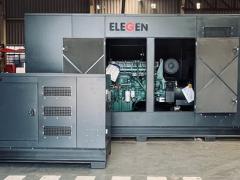A new study from ACTOM High Voltage Equipment has demonstrated that machine learning techniques can significantly improve the identification of lightning impulse failure modes in power transformers – a process that is traditionally slow, destructive and dependent on specialist experience. The research, presented by ACTOM Engineer Bafana Nyandeni at CIGRE Southern Africa 2025 on October 15, compares multiple algorithms to determine which offer the most accurate and practical diagnostic support during transformer impulse testing.
Lightning impulse testing is used to confirm whether transformer insulation can withstand transient over-voltages by applying full wave impulses at defined basic insulation levels (BILs). Resultant waveforms include parameters such as front time, tail time, peak voltage, time to chop and overshoot. When failures occur, isolating the fault within the complex winding structure requires interpretation of these non-stationary, time-varying waveforms – a task that normally depends on specialist analysts and, in some cases, destructive inspection.
Nyandeni’s study investigates whether machine learning models can interpret these waveform characteristics more systematically. The comparative assessment reviewed artificial neural networks (ANNs), decision trees (DTs) and support vector machines (SVMs). ANN-based models were found to be sensitive to mismatches between training and fault samples while DT models exhibited reduced precision when additional samples increased the depth and imbalance of the tree structure.
To overcome these limitations, the study developed a hybrid method combining the discrete wavelet transform (DWT) for feature extraction with SVM for classification. The DWT was used to decompose impulse waveforms into detailed and approximate coefficients, enabling extraction of feature sets such as wavelet energy, standard deviation and mean values. These features were used to train the SVM classifier using test signals representing interwinding, interturn and line-to-earth faults across BIL levels ranging from 170 kV to 650 kV.
Model performance was evaluated using confusion matrices across multiple dataset combinations with accuracy ranging up to 98,3% for certain series fault classifications. The study found that organising faults into series (interwinding/interturn) and shunt (line-to-earth) groups helped stabilise the SVM classification boundary and minimise overfitting.
According to the findings, the DWT-SVM approach provided the most consistent method for distinguishing between lightning impulse fault types and offers potential to shorten investigation time, reduce unnecessary disassembly and isolate likely failure zones earlier in the testing cycle.













